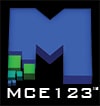The central processing unit for optical computing could simply be a tunnel, in which light sources are directed around focal points and distances on a long cylindrical tube, which computes for different values based on the input of light along the vertex(es) or focal point(s) that are targeted with the light. An example would be to add two numbers, you would simply send the light to one focal point on the adder focal point center, and then the light would come back into the adder from the focal point, and you could then add it to another focal point of light that would vary based on its angle and distance to the focal point that it terminates, based on the value of the number.
The actual cylindrical tube could be used to compute numbers on very minimal amounts, such as binary numbers, or 0’s and 1’s, however the combination of different light sources at the same time would determine which binary numbers were lit up along the focal point(s) or vertex(es) of the light paths inside the central processing unit.
This idea has been festering for a long time, but it’s true realization occurred yesterday, in COMP 530, in which Assembly Language was explained, in addition to how the Arithmetic Logic Unit works in a CPU, and how Registers and Main Memory works with the CPU.
The optical computer could essentially replace the electronic CPU, while it would still require electronic parts, but its timing cycles would be much faster – at the rate that light can be generated and realized inside the central processing unit of the optical computer.
Previous invention documentation supports this development, such as the multi-focal point optical cabling, which has points of exit along the cable, which can re-route to different places based on the multi-mode cabling – in addition to the multi-focal point emitter.

















